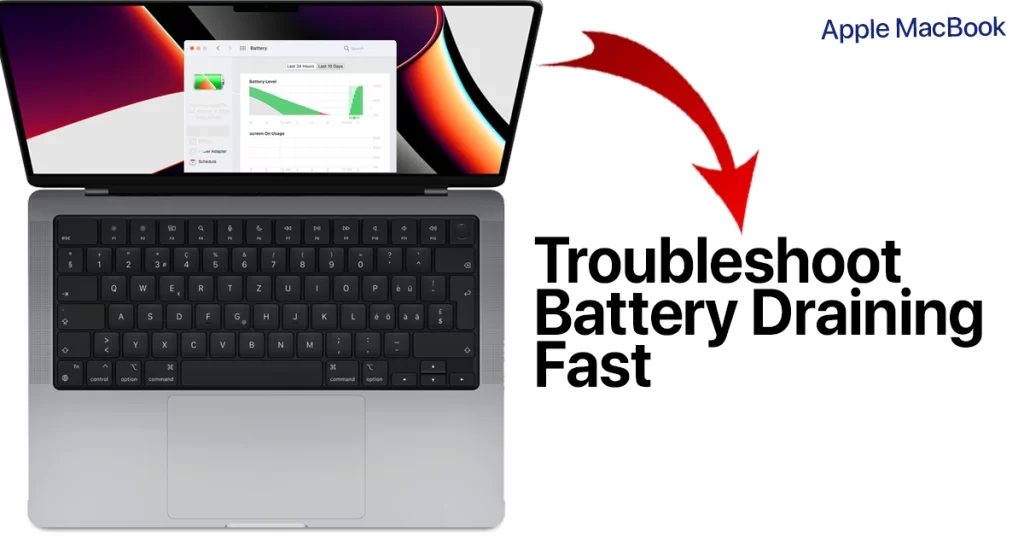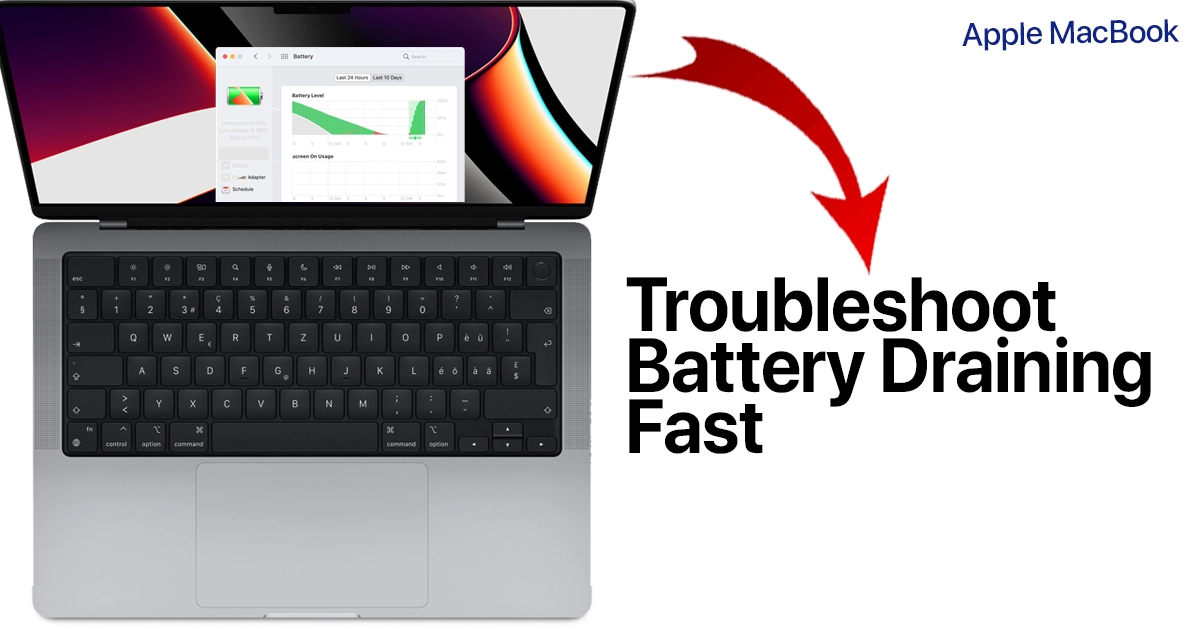Nothing is more frustrating than your MacBook’s battery life plummeting rapidly. Swiftly draining battery can seriously limit your productivity on the go. No worries though, because with some targeted diagnostics, you can get to the bottom of abnormal battery drain on your MacBook.
It’s normal for lithium-ion batteries to degrade somewhat over time. But if your MacBook battery seems to be depleting excessively fast all of a sudden, something else is likely causing the expedited battery drain. The good news is, you can diagnose the issue with a few simple checks.

Problem Description
“I’m really disappointed with my MacBook’s battery life lately. It seems like it’s draining incredibly fast, even when I’m just doing basic tasks like browsing the web or checking emails. I used to rely on my MacBook for its excellent battery performance, but now I find myself constantly hunting for a charger. Apple, please address this issue with a software update or provide some guidance on how to improve battery life. It’s becoming a major inconvenience.”
– random MacBook user
Pinpointing battery drain problems relies on observing system activity and monitoring which apps and processes are consuming the most power. Isolating the culprit helps determine whether software tweaks, hardware repair or replacement battery is the solution. Let’s investigate the top ways to diagnose rapid battery drain on MacBook.
Common Causes of Fast Battery Drain
- Apps continuing high CPU activity in background
- Too many browser tabs and programs open
- Outdated software and drivers
- System data leaks or performance issues
- Battery needs re-calibration to fix metering
- Worn out battery reaching end of lifespan
- Damaged or faulty battery or charging circuitry
How to Diagnose Battery Drain Issues
Performing the following procedures will help you determine what’s causing your MacBook’s battery to drain faster and resolve the issue.
1. Check Activity Monitor
Activity Monitor allows you to view apps using the most energy and system resources.
To use Activity Monitor, refer to these steps:
- Open Activity Monitor in Applications > Utilities
- Click the Energy tab at the top
- Observe apps ranked by energy impact
- Quit or reconfigure high energy apps
Activity Monitor helps isolate software driving battery drain.
2. Scan Diagnostic Reports
Apple Diagnostics can highlight hardware issues affecting battery performance.
Here’s how to run a scan:
- Restart MacBook and hold D during boot
- Select your language and run basic diagnostics
- Review the test report for any battery issues
- Contact Apple support for next steps if problems found
Diagnostics can detect many battery failure modes.
3. Reset SMC and PRAM
Resetting SMC and PRAM resets power and system management controllers, which may improve battery efficiency if they have become unoptimized.
To complete the resets, follow these steps:
- Shut down, press Shift-Control-Option on left side and power button
- Release all keys then power on to reset SMC
- Shut down again and hold Command-Option-P-R on restart
These basic resets often help stabilize abnormal battery drain.
4. Top Off Battery Charge
Fully charging your MacBook’s battery periodically helps maintain its electrons and prevent early deterioration.
Be sure to do these:
- Run battery down under 10% at least once per month
- Fully charge back to 100% and let sit overnight
- Avoid leaving plugged in 24/7 to top off
Remember to discharge and top off the battery to maximize cycles.
5. Update Software, Drivers, and Apps
Outdated operating systems, drivers, and apps can develop energy inefficiencies over time. Updating them may boost battery efficiency.
Check for and install pending updates for your MacBook with these steps:
- Any macOS software updates
- Latest drivers for graphics card, etc
- App Store updates for your applications
Updating macOS and drivers prevents battery drain from power leaks.
6. Calibrate Battery with Full Drain Cycles
For incorrect battery percentage readings, calibration can help align the report with true capacity.
To calibrate the battery of your MacBook, follow these steps:
- Fully charge MacBook to 100%
- Use normally until fully drained to 0%
- Charge back to 100% without interruption
- Repeat drain calibration as needed
Calibrations may help if battery percentage doesn’t match runtime.
7. Check Battery Cycle Count
Determining how many charge cycles your MacBook’s battery has gone through can indicate if its lifespan is ending. Up to 1000 cycles is expected.
Here’s how to check cycle count:
- Click the Apple logo then About This Mac
- Click System Report
- Navigate to Hardware > Power
- Locate Cycle Count which shows age
Higher cycle counts point to a battery needing replacement.
8. Test with Alternate Power Source
If drain issues persist on battery power, test charging and discharging connected to the wall adapter alone. This can isolate a damaged battery.
You can run alternate tests by performing the following:
- Running on wall power with battery removed
- Checking discharge while shut down and plugged in
- Contact Apple support if issue continues
An external power test determines if replacement battery is needed.
Using these diagnostics tactics methodically will help narrow down what exactly is causing expedited battery drain on your MacBook. Isolate hardware defects versus software fixes to get the best battery life back for the long haul.
FAQs MacBook Battery Draining Issue
-
What are some common reasons a MacBook battery might start draining faster than normal?
Rapid MacBook battery drain is often caused by resource-intensive apps running in the background, too many browser tabs and programs open at once, outdated operating system and drivers resulting in energy inefficiency, data leaks or other performance issues, a worn battery nearing end of life, or a damaged/faulty battery. Checking Activity Monitor and system diagnostic reports can help isolate the cause.
-
How can I test if the battery itself is faulty versus a software issue causing fast drain?
To identify a battery hardware defect rather than a system problem, try resetting the SMC and PRAM, fully charging the battery to calibrate readings, inspecting the battery’s cycle count age, and testing discharge behavior while connected to wall power alone with battery removed. This helps determine if replacing the worn or damaged battery is necessary.
-
What steps can I take to diagnose why my MacBook battery is draining so quickly?
Start diagnosing rapid battery drain by using Activity Monitor to identify high energy apps, running Apple Diagnostics to spot hardware problems, checking for macOS/driver/app updates, doing calibrating charge cycles, observing the battery’s age in cycle count, and testing with an alternate power source like the wall adapter alone. Methodically isolating the issue is key to determining whether software adjustments or battery replacement will resolve it.
